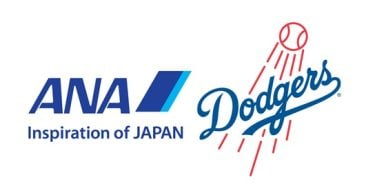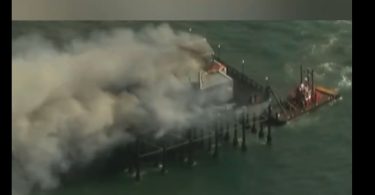It sparkles. It bubbles. Is it Champagne, Cava, Asti Spumante, Prosecco, Sekt?
How do you know what is in your glass if it has bubbles?
Determine where the grapes are grown and how they are fermented
1. If they are from the Champagne region of France and are Pinot Noir, Chardonnay or Pinot Meunier – it is likely that you have Champagne in your glass (and the bubbles are small and gentle).
2. If the grapes were grown in the Piedmont region of Italy and the wine sparkles in your glass, it is likely to be Asti Spumante. Classified in 1993 as the Denominazione di Origine Controllata e Garantita (DOCG), as of 2004, it is the largest producing appellation in Italy. More than ten times as much Asti is produced in Piedmont than Barolo (a well-known Piedmontese red wine).
3. If the grapes were grown and harvested near Trieste, Italy and the wine was produced using the Charmat-Martinotti Method (secondary fermentation in stainless steel tanks) it is likely that it received the DOCG (Prosecco Valdobbiadene) designation and you are drinking Prosecco. The rules also permit the use of Methodo Classico (secondary fermentation in the bottle). Grape varieties include Glera (up to 15 percent of total), as well as Verisco, Bianchetta Trevigiana, Perera, Glera Lunga, Chardonnay, Pino Biano, Pinot Regirgio and Pinot Nero.
4. If the grapes are Macabeo, Parellada or Xarel-lo, and they are grown/harvested in Catalonia, Spain, and the wine is made using the same method as Champagne, it is likely to be Cava.
5. Espumante is the Portuguese version of sparkling wine and made in the Champagne style. It is produced only in DOC Bairrado, south of Vinho Verde. It must be stamped with the VEQPRD (Vinho Espumante de Qualidade Produzido em Regiao Determinada) certification.
6. Sekt is the German/Austrian version of sparkling wine made from Riesling, Pinot Gris and Pinot Blanc grapes in the Champagne (Charmat) method.
Asti Spumante Suggestions. Recently Curated
At a recent New York City event, wines from the Cembra Valley (near Trento) a selection of regional wines were introduced.
1. The tradition started in the 1950s by Ignazio Moser who cultivated a few rows of white grapevines. In the 1970s, with assistance from his sons, Francesco and Diego, the first bottle of Trentodoc was introduced. This wine is perfect as an aperitif and pairs well with international cuisine. Today, Francesco is also a legendary Italian cyclist.
• Moser 51.151 (Brut). Named in honor of Francesco’s 1984 Hour Record when he smashed the previous world record.
• Metodo Classico supmant. Trento DOC Bianco. Chardonnay and Pinto Nero grapes, farmed and harvested by hand. The vineyards are located near Maso Villa Warth overlooking the Adige Valley and Trento. The wine is made by soft-pressing whole bunches of grapes. Fermentation and ageing takes place in stainless steel tanks and oak casks. The wine is bottled and undergoes a secondary fermentation in the bottle. Bottle ageing on its lees for at least 30 months until degorgement phase.
• To the eye, fine perlage, straw-yellow color, directing a fresh and fragrant note to the nose. Dry and fresh on the palate with a long-lasting finish.
• Moser Rose (Extra Brut). Trento DOC Rose. Pinot Noir grapes, farmed and harvested by hand, sourced in the vineyards of the family estate in Maso Villa Warth, overlooking the Adige Valley and the town of Trento. Soft pressing of whole bunches of grapes with first fermentation and ageing in stainless steel tanks and then bottled for secondary fermentation. Bottle ages on its lees for at least 40 months until the degorgement stage.
• Light pink trending to coral to the eye (think coral reefs in Fiji and the Caribbean). To the nose – fresh fruits of apples, cherries and perfectly ripened strawberries leading to a slight hint of sweetness that is enchanting but not off-putting. The palate is fresh and lively. Pair with crayfish.
2. Altemasi offers sparkling wines from Trentino that are made using the Classic Method approach with bottle fermentation. The Chardonnay and Pinot Noir grapes create cuvees that are world renown thanks to the position of the hillside vineyards that reach altitudes of over 600m above sea level.
• Altemasi Trentodoc Riserva Graal 2008.
• Grape variety: Chardonnay – 70 percent; Pinot Noir – 30 percent. Produced in the highest and most suited vineyard in Trento and the Valle dei Laghi. Aged on the lees – over 60 months.
• To the eye, almost clear trending to sunlight yellow with a tilt to light green. Very light and persistent perlage. The nose detects notes of pressed flowers, dried apricots, honey, ripe apples, and hazelnut. To the palate – vigor, great freshness, acidity that is well-balanced (a hint of citrus zest); offers remarkable length and pleasant memories. Serve as an aperitif or with smoked salmon and dill.
• Altemasi Millesimato Trentodoc 2010. Chardonnay – 100 percent. Grapes selected from the highest and most suited vineyards in Trentino (Valle dei Laghi and hills around Trento). Fining on the lees 36-48 months.
• Sunlight yellow to the eye, persistent foam with minute fine grain perlage with hints of honeysuckle, and ripe yellow apples to the nose. Dry and crisp on the palate that leaves a memory of well-balanced structure. Enjoy as an aperitif or with deep fried king prawns or veal escalopes alla livernese (tomato and herbs).
3. Ferrari. The company brochure claims, “It isn’t easy being a legend…and to go on being one, vintage after vintage, for over a century. To do so calls for passion, care and respect for tradition…” “As Italy’s most prestigious sparkling wine maker, Ferrari expresses itself in an anthology of products of matchless finesse.”
• Ferrari Brut. Chardonnay – 100 percent. Hand-picked at the beginning of September among the many communes of the Province of Trento in the Val d’Adige, Val di Cembra and Valle dei Laghi (985-2300 ft.) above sea level with south easterly or south westerly exposure. Maturation – for several years on selected yeasts from Ferrari’s own cultures.
• To the eye – straw yellow to pale green. To the nose fresh without being aggressive leading to a fruit note of ripe yellow apples, citrus and wild flowers and a hint of yeast. To the palate it is clean and very well behaved that suggests ripe fruit and crusty bread with a finish that (fortunately) lingers. Pair with sashimi.
• Ferrari Rose. Made in the classic Method for sparkling wine from a blend of Pinot Nero (vinified as a rose) – 60 percent, and Chardonnay – 40 percent. Harvested by hand in mid-September. Grapes selected from hillside around Trento (985-1970 ft.) above sea level with south easterly or south westerly exposure. Sevela years of maturation on selected yeasts from Ferrari’s own cultures.
• The color of fresh salmon to the eye, elegant to the nose with flower blossoms and hints of red currants and berries. Dry, clean and refined to the palate with a suggestion of sweet almonds and aromatic musk. Long dry finish. Pair with mushroom quiche or fried calamari.
This copyright article may not be reproduced without written permission from the author.






























